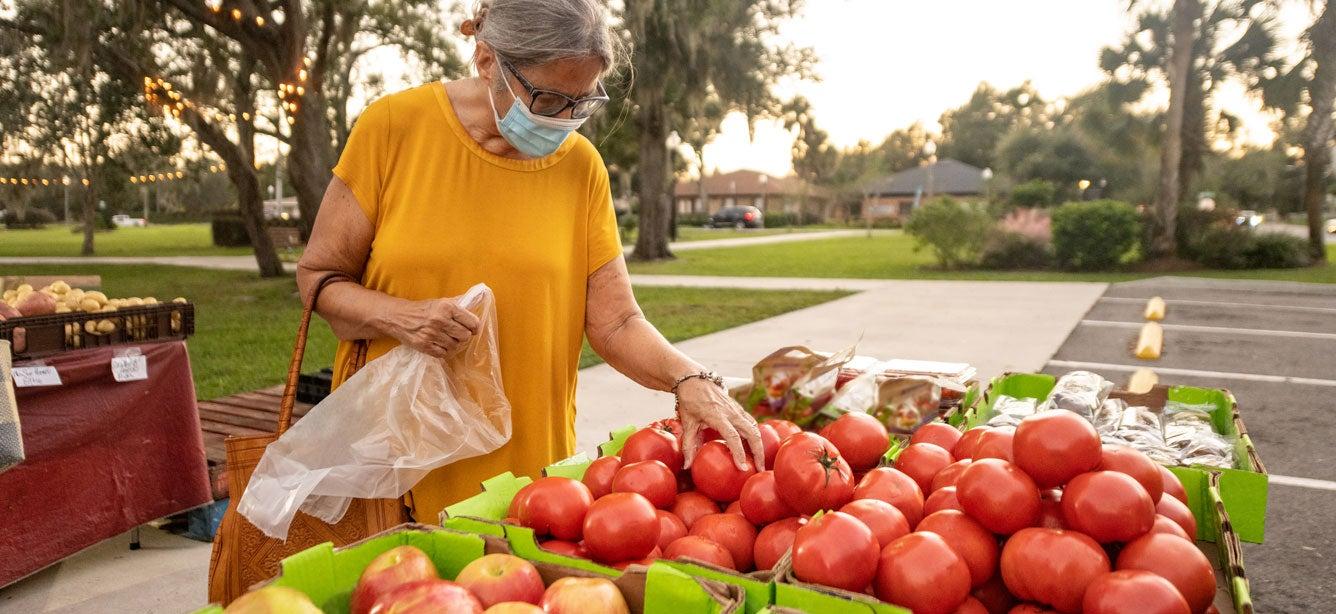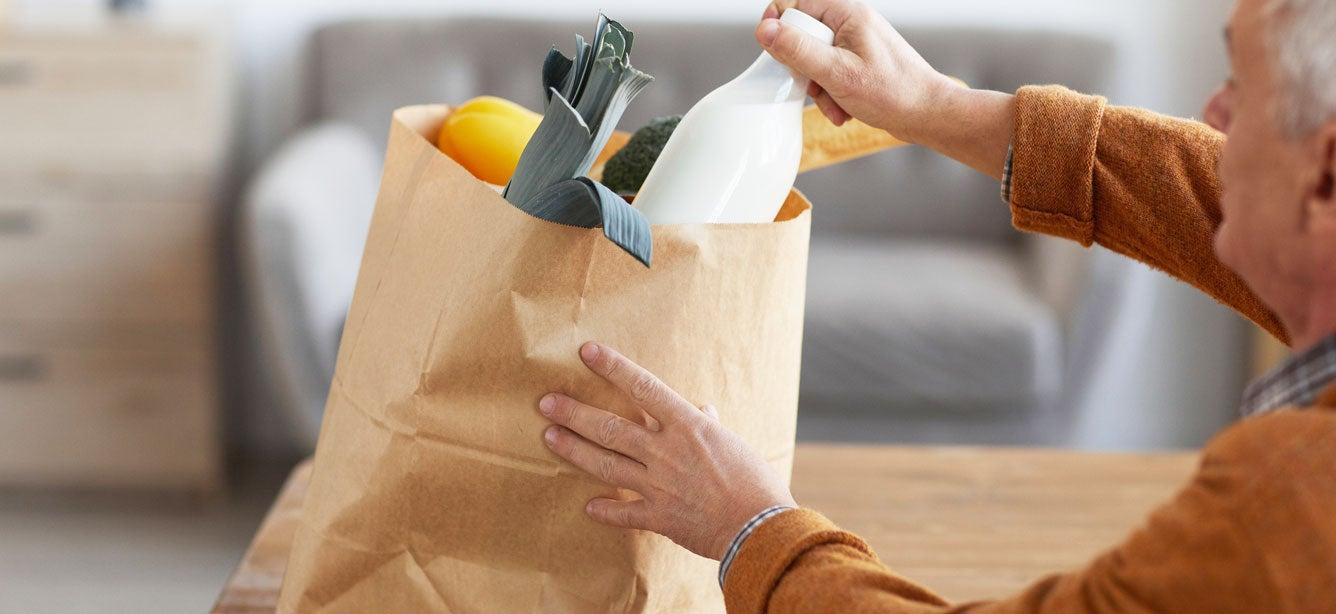
Related Topics
Older adults who receive food assistance through the Supplemental Nutrition Assistance Program (SNAP) likely saw a small increase in their benefits for fiscal year 2025, which runs Oct. 1, 2024, through Sept. 30, 2025.1 Thanks to an annual cost-of-living adjustment (COLA) applied by the U.S. Department of Agriculture (USDA), this increase adds $1–$5 in benefits each month.
Still, the average monthly SNAP benefit of $188 that many older adults receive2 pales in comparison to rising food prices. But there are ways to maximize these benefits and stretch your food dollars further. Here’s how.
Check if you’re eligible for other food assistance programs
SNAP is the nation’s largest food safety net program, but millions of older Americans who are eligible to get help are not enrolled in SNAP. For people age 60 and older or people with disabilities, there are special rules to apply for SNAP that look at net, not gross, income (that is, income left after many deductions are made).
But SNAP isn’t the only food benefit program available. There are a few other programs that help older adults get adequate food:
- The Senior Farmers Market Nutrition Program (SFMNP) provides vouchers (coupons) you can use to buy fresh vegetables, fruits, honey, and herbs. You can use these vouchers at local farmers markets, outdoor stands, and community-supported agriculture programs. You may get help from this program if you are 60 years of age or older and have limited income. However, not every state or every area within a state offers the SFNMP. It also may only be available at certain times of the year. Check availability in your area by using the USDA’s SFMNP contact map.
- The Commodity Supplemental Food Program, also known as the Senior Food Box program, gives you certain foods at no cost. The purpose of the program is to promote good health. If you meet the program guidelines, you can get a 40-pound box of food each month. The types of food you can get may include canned fruits and vegetables, canned meats (like canned beef, pork, and beef stew), pasta or rice, dry beans, peanut butter, fruit juices, dry cereals, cheese, and powdered and canned milk. Use the USDA’s state resource list to find a program near you.
You can also find out if you can get help from any of these programs using NCOA’s BenefitsCheckUp. NCOA's free online tool also helps you see if you are eligible for home-delivered meals and locate food banks in your area.
See if you can deduct medical expenses
SNAP has special rules for households with an adult age 60+ or for people living with a disability. When these people apply for SNAP, the local SNAP agency applies several deductions from their incomes to see if they qualify. One of those deductions is for excess medical expenses.
If an older adult or person with a disability spends more than $35 each month out of pocket for medical expenses, they can deduct that amount from their income when they apply for SNAP, which can mean a larger benefit amount.
Medical expenses can include many things, such as prescription drugs, dentures, hearing aids, prescription eyeglasses, and unpaid Medicare costs like copayments at the doctor’s office. Your state may also allow additional deductions, such as for medically prescribed alternative therapies (acupuncture, for example) or transportation to medical appointments. Check with your local SNAP office for more information and assistance.
Look for Double Up Food Bucks at farmers markets
Many farmers markets around the country have programs to encourage people who receive food benefits to buy fresh, healthy food from local producers. Most commonly called Double Up Food Bucks, these programs also may be called Double Dollars or Double Your Food Bucks.
Generally, you bring your SNAP card to the information booth at your local participating farmers market. You’ll be asked how much money you would like to spend, and the booth attendants will swipe your card for the amount. You’ll receive tokens worth twice that much that you can spend on food.
You can visit your local farmers market to see if they participate in the program.
Let your SNAP benefits carry over
SNAP benefits are loaded monthly onto an electronic benefits transfer (EBT) card. But the program does not require you to spend all your SNAP dollars within the month. Most state SNAP programs allow people to carry over any unused money on the EBT card for several months to up to a year.
This means you don’t have to spend your benefits all at once. Likewise, if you only receive the minimum SNAP benefit amount of $23 a month, you may decide to wait several months and spend the benefit when you have more SNAP dollars saved. You can call your state’s EBT customer service number to find out how much you have remaining on your card.
Learning how to stretch your food budget can go a long way to help you save money and stay healthy. But what you buy with food benefits is important too. Our healthy eating tips can ensure you maximize getting the right nutrients every time you shop. And be sure to bookmark our Food Assistance for Older Adults resource page for the most up-to-date information on benefits programs that help stretch your grocery budget.
Sources
1. USDA. Food and Nutrition Service. SNAP – Fiscal Year 2025 Cost-of-Living Adjustments.. Aug. 2, 2024.. Found on the internet at https://fns-prod.azureedge.us/sites/default/files/resource-files/snap-cola-fy25.pdf
2. USDA. Characteristics of Supplemental Nutrition Assistance Program Households: Fiscal Year 2023. April 2025. Found on the internet at https://fns-prod.azureedge.us/sites/default/files/resource-files/snap-FY23-Characteristics-Report.pdf




